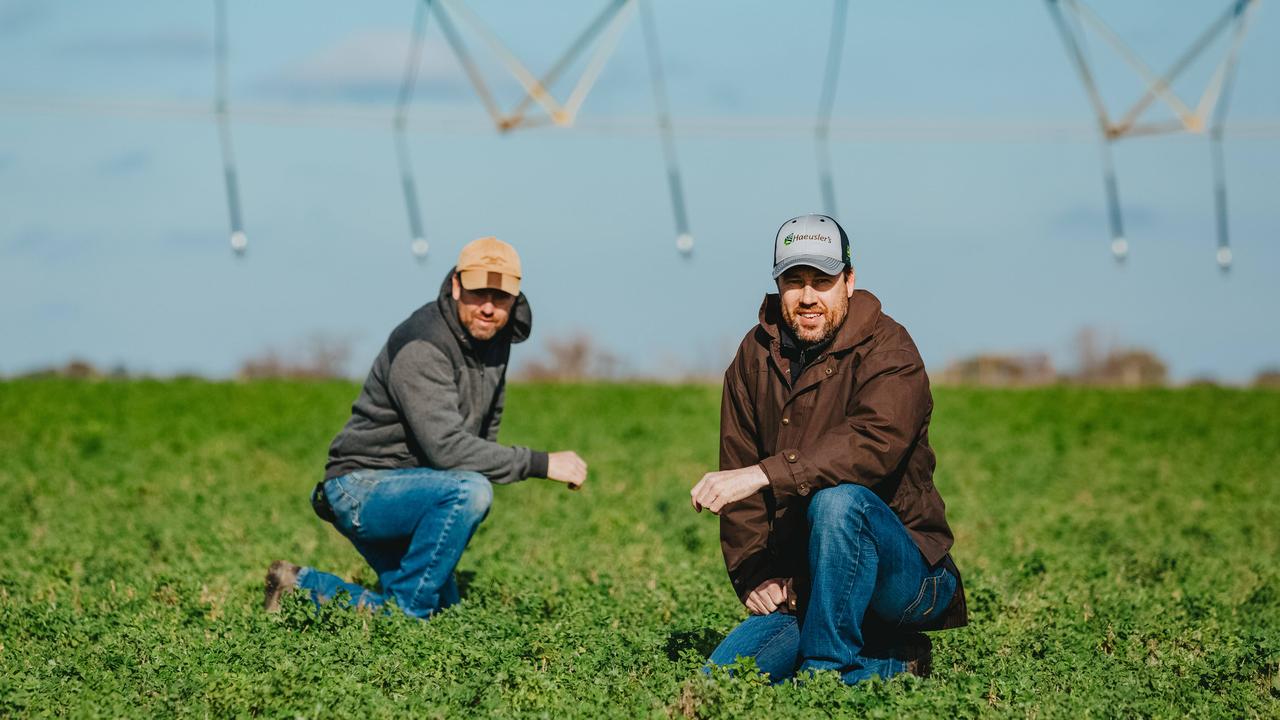How to test soil and meet its nutritional needs
Calculating soils’ nutritional needs, then meeting them, can be critical to farm productivity, writes FIONA MYERS.

SOILS are more than just a means of holding up plants.
Feeding soil can make the difference between a healthy paddock and one that struggles.
The level of nutrients in soil varies widely, depending on soil type, what has been growing on it and how much fertiliser has been applied. It is important to factor in these three variables when thinking about how soil will support plant growth.
The most reliable way to calculate nutrient levels is to test soil.
TESTING TIMES
A soil test is usually done by an agronomist or someone who can accurately take a sample of your dirt — the local farm supplies store is likely to do it or know someone who can.
They have knowledge about how to take the test, and — most critically — where in the paddocks. Just one sample in a paddock might not give an accurate reading of what’s happening across the whole paddock.
PASTURE MANAGEMENT: CLINICAL APPROACH FOR BEST FEED GROWTH
WHICH FARM ACCREDITATION SCHEMES ARE WORTH THE TIME AND MONEY
HOW TO PLAN AND BUILD A FARM DAM
If someone has stored a pile of urea in one location in the past, and the soil sample is taken at that spot without knowing the history, then the soil test result will probably show there is plenty of nitrogen. The rest of the paddock might be low in nitrogen but one isolated soil test could lead you to think otherwise.
Some agronomists use GPS to locate the sites where the sample is taken, so it’s possible to track changes by going back to the same sites each time.
Fertiliser isn’t cheap, so putting on what is needed — no more and no less — is made possible through soil testing.
Soil samples are taken with a soil auger or a sampling tube, which looks like a hollow crow bar. It’s plunged into the soil and collects a core of about 15cm of soil. This sample is then sent away to be analysed.
A tip — if there are different soil types in a paddock, take a sample of each type (clays, loams or sand) and have them tested separately. Each area could require a different fertiliser application or mix, and that is not as difficult as it seems. Variable-rate fertiliser spreaders can do the job.
Once soil samples are taken and sent away to a lab, the analysis can take up to two weeks depending on the workload of the lab. Be organised and factor that time in, rather than expecting to take a soil sample one day, and have a fertiliser regimen the next.
Regular soil testing is recommended. For pasture paddocks that livestock are grazing, once every two to three years is sufficient, as grass uses nutrients in the soil.
If a paddock is planted for hay production or growing crops, it’s worth testing more often, as crops can be more nutrient-hungry than pasture. A base rate for a soil test is $100-$150, depending on the level of information needed.
READ ME
Soil test results are delivered as a printed summary of factors and indexes, which may not all look familiar. Things such as pH — the acidity of the soil — and some nutrient levels are common and easy to understand. But other information, such as phosphorus buffering index, exchangeable calcium and cation exchange capacity, could be more difficult to decipher. And deciding what to do with the information can be a challenge.
The agronomist who takes the initial soil tests will be able to analyse results and provide a prescription of what fertiliser mix is needed.
FOOD FOR THOUGHT
While there may be merit in applying superphosphate, as has been done for many years by many farmers, fertiliser practices have moved on from the one-size-fits-all solution and it’s important to make the most of what is out there.
A soil test could show there is no need to fertilise, saving money and time.
The flip side — over-fertilising — should be avoided, especially if paddocks are near a water course, as nutrients that are surplus to plant needs can be washed into creeks and rivers, leading to problems in those waterways.
If test results show a small deficiency in a certain element, don’t think that just because the level that needs to be applied is small, the soil can do without it.
Sometimes one nutrient affects the uptake of another, so if the advice is to apply small amounts of something, it could be worth it.
SPREADING THE WORD
Once a fertiliser regimen is worked out, it needs to be applied. Small fertiliser spreaders can be fitted to tractors, but it’s horses for courses. If a large area needs to be covered and you don’t want to outlay for equipment, consider hiring a spreader contractor. Many have trucks that can cover country quickly and accurately.
Budget $45-$50 a hectare for fertiliser spreading.
COUNTER CLAIMS
There are plenty of alternative fertilisers out there. However, it’s a matter of buyer beware.
Don’t be sold on claims that aren’t supported by scientific evidence and trial work. The you-beaut “Pasture Master Gold Bullion Supermix” (not a real brand — so don’t waste time looking it up) might claim to boost growth and make you rich, but it could also be a complete waste of money.
Examine the product analysis. There’s plenty of merit in using some alternative fertilisers, such as feedlot waste or chicken manure, but research what you are buying.
Chicken manure might look cheap per tonne, but if you have to apply three or four times as much as a more traditional fertiliser, take that cost into consideration.
Also remember that alternative fertilisers could contain things that you don’t want, such as heavy metals.
• Agriculture journalist Fiona Myers has expertise in livestock and wool


